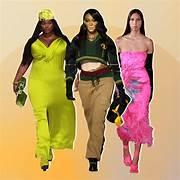The Evolution of Fashion: From Necessity to Art

The Evolution of Fashion: From Necessity to Art
Fashion is a dynamic expression of individual identity and a reflection of cultural and social trends. Over the centuries, it has evolved from a mere necessity to a profound form of art, influencing and being influenced by various aspects of human life. Let's delve into the fascinating journey of fashion and explore its significance in our world today.
A Historical Perspective
Fashion's origins are rooted in the basic human need for clothing to protect against the elements. In ancient times, garments were primarily functional, made from natural materials like animal hides, wool, and plant fibers. However, as societies developed, so did the desire for adornment and differentiation.
In ancient Egypt, linen was a prized fabric, and clothing became a symbol of status and wealth. The Greeks and Romans introduced draped garments, emphasizing the beauty of the human form. The Middle Ages saw the rise of elaborate garments adorned with intricate embroidery and jewels, reflecting the hierarchical structure of society.
The Renaissance and Beyond
The Renaissance era marked a significant turning point in fashion. With the revival of art and culture, clothing became more opulent and luxurious. Fabrics such as silk, velvet, and brocade were in high demand, and fashion trends spread rapidly across Europe.
The 18th and 19th centuries witnessed dramatic changes in fashion, influenced by political, social, and technological developments. The French Revolution, for instance, led to a shift towards simpler, more practical clothing. The Industrial Revolution brought about mass production, making fashionable clothing more accessible to the general population.
The 20th Century: A Fashion Revolution
The 20th century was a period of rapid innovation and transformation in fashion. The early 1900s saw the rise of haute couture in Paris, with designers like Coco Chanel and Christian Dior revolutionizing women's fashion. The flapper style of the 1920s, characterized by shorter hemlines and looser silhouettes, symbolized a break from traditional norms.
Post-World War II, fashion became more diverse and experimental. The 1960s and 70s were marked by bold, eclectic styles, influenced by the counterculture movement. The 1980s brought about the era of power dressing, with oversized shoulder pads and bold colors reflecting a new era of confidence and ambition.
Fashion Today: A Blend of Art and Sustainability
In the 21st century, fashion continues to evolve at a rapid pace, driven by technolog
- Art
- Causes
- Crafts
- Dance
- Drinks
- Film
- Fitness
- Food
- Jogos
- Gardening
- Health
- Início
- Literature
- Music
- Networking
- Outro
- Party
- Religion
- Shopping
- Sports
- Theater
- Wellness
- IT, Cloud, Software and Technology


